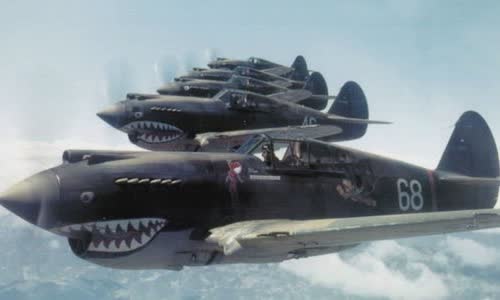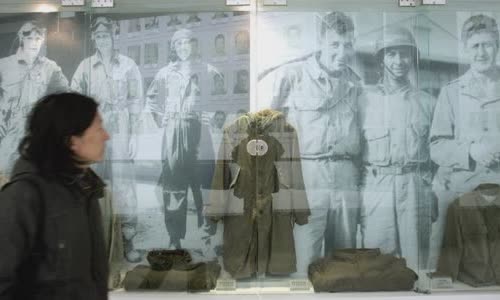In 1941, a group of US military pilots was invited to China to form a Flying Tigers squadron to help the country against Japan.
At the invitation, these Americans signed a one-year contract to live and work in China, with the task of controlling, repairing and building aircraft for about $ 13,700 a month, with 30 days off a year,

Tiger squadron flew over China in May 1942 Photo: CNN
It was a treat with an adjusted price of 2020 that several hundred Americans took in 1941 to become Chinese heroes.
Those pilots, mechanics and American ground support personnel became members of the American Volunteer Group (AVG), nicknamed the Flying Tiger.
Flying Tiger pilots are believed to have destroyed up to 497 Japanese aircraft, while losing only 73.
In the late 1930s, China was attacked by the Japanese empire and struggled against better equipped enemies.
To improve their fighting capabilities, Chiang Kai-shek's government hired retired American captain Claire Chennault to set up an air force for them.
The US is building large numbers of fighters but it intends to hand them over to Britain to fight against Germany or for US forces to use, in the context of many people worried that the US would be caught up in the war in Europe.
99 military pilots with American support personnel arrived in China in the fall of 1941. But the Chennault-trained pilots were not the best.
They go on an adventure in the East to make money, find a lost girlfriend or simply feel bored and want to find a stimulating job.
With such a suitable team, Chennault had to train them how to become fighter pilots and how to fight in groups almost from nothing.
In his memoirs, Chennault wrote that US P-40s sold to China lacked many important features, including a modern targeting system for machine guns.
Chennault compensated for the P-40's weakness with tactics: Tiger pilots dived from above and fired machine guns at Japanese aircraft with greater maneuverability.

The old uniform of the Flying Tigers squadron was displayed in a museum in Sichuan, China in 2005 Photo: AFP
Flying Tigers took part in the first battle on December 20, 1941, preventing Japanese aircraft from attacking AVG base in Kunming, China.
Flying Tiger pilots quickly hone their skills.
Japanese bombers flocked to the city in more than 11 days on Christmas and New Year holidays.
Tigers stay in Rangoon for 10 weeks.
In 31 encounters, they shot down 217 enemy aircraft and severely damaged 43 others, while suffering a loss of 5 dead pilots, one was taken prisoner, 16 P-40s were destroyed.
However, the allied forces in Burma could not stop the Japanese.
With trade wars and disagreements on many issues, US-China relations have recently become seriously worse.
In May, the Chinese consulate in Houston donated $ 11,000 in food to a hospital in Monroe, Louisiana, home to the Chennault Military and Aviation Museum, when the medical center was struggling to cope with Covid-
Also in May, China's Guangxi Zhuang Autonomous Region sent medical supplies to the Flying Tiger History Organization to give to flying Tiger veterans as well as their friends and relatives.
In China, the professional basketball team in Xinjiang uses Flying Tigers as a nickname.



 Sophie Cigleris
Sophie Cigleris







